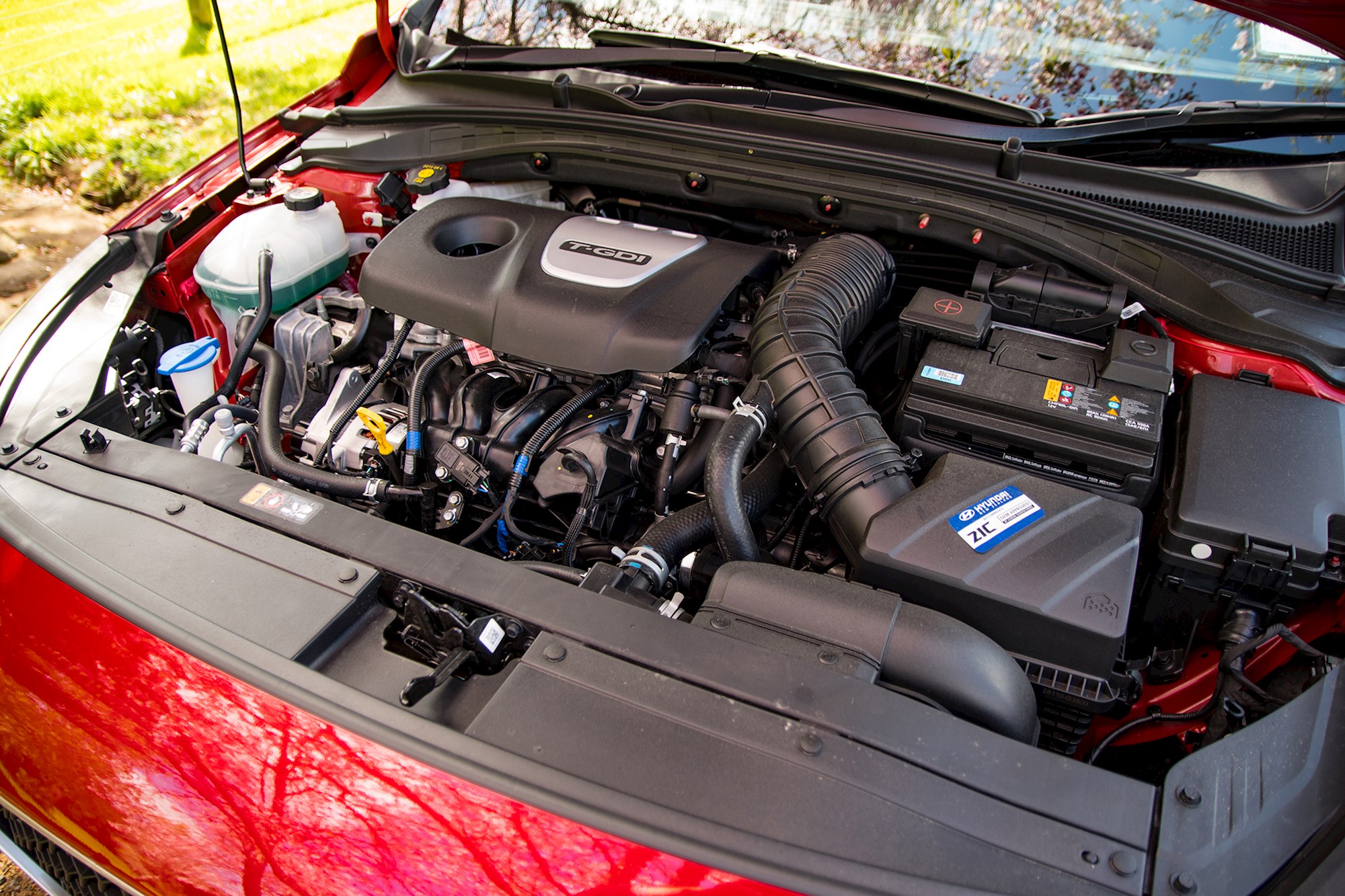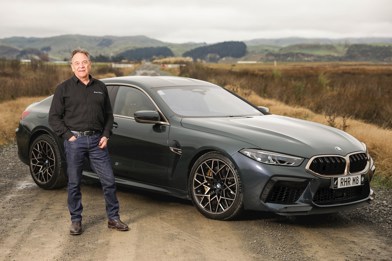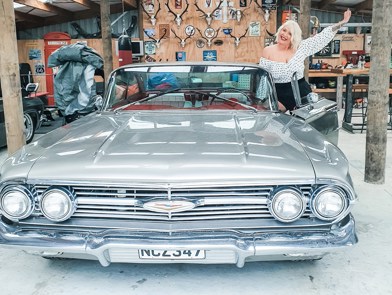The raucous, bubbly, wonderfully balanced Hyundai i30 N was one of the most poignant new-car releases of 2018. Despite no rich hot hatch lineage, it quickly established itself as a segment darling. Along with the Kia Stinger GT, it also involuntarily became a full stop of sorts on the perception issues that once blighted Korea's automotive landscape.
Had the i30 N not hit a home run at launch, the idea of a 'warm hatch' variant of the practical i30 hatchback might not have piqued our interest. But given the success of its faster, louder sibling, this was instead a new model shrouded in curiosity.

And off the bat, there's a lot to like with the N-Line on paper.
Being based on one of the most sensible, well-formed hatches on the market guarantees dependable practicality. Adults get reasonable head and leg-room in the flanking rear seats, boot space is a handy 395L, and rear visibility is among the best in class.
And, like the i30 N before it, build quality is well above par. Each of the cabins fixtures, buttons, and panels feels as tight as a drum.
Read more: Hot hatch battle — Ford Focus RS Limited versus Hyundai i30 N
But the best thing to note is that the N-Line — unlike some of its faux-performance rivals — actually backs up its sporty intentions with some key changes under the skin. The N-style front and rear bumpers, 18in alloys, bucket seats, and garish red seat belts are thankfully backed up by an engine and transmission combination that's bespoke to the model.
The N-Line trades the naturally aspirated units found in standard i30s for a turbocharged, direct injection 1.6-litre, making a healthy 150kW at 6000rpm, and 265Nm at 1500-4500rpm. That's 30kW/62Nm north of the 2.0-litre i30 Elite, and 52kW/98Nm south of the full fat i30 N.
Those numbers are supported by a seven-speed dual-clutch auto transmission. The suspension has also been given a firmer calibration, and each of those aforementioned wheels comes wrapped in a Michelin Pilot Sport 4 tyre.

Tabling up the i30 N-Line's rivals is a complicated affair. Priced at $43,990, not many hatches cross its path. The 'big motor' 2.5-litre Mazda3 is in the same ballpark, but doesn't necessary chase the same warm hatch tact.
There's also a few left-of-centre Europeans to consider, like the Peugeot 308 GT featured two weeks ago. And then there's the i30 N-Line's evil Kia twin — the Cerato GT, based on the same platform with the same drivetrain.
One of the biggest feathers in the Hyundai's cap is its equipment levels. As standard, the N-Line comes with heated and ventilated electric front seats, wireless phone charging, and dual-zone climate control coupled with adjustable vents for passengers in the rear.

It also gains a swathe of additional safety tech over the i30 Elite, including radar cruise control, lane keep assist, and autonomous emergency braking. Although, it's worth mentioning that some of the i30's rivals offer all these features in base variants. The lack of blind-spot monitoring — a standard feature in the rest of the i30 line-up — is also somewhat confusing.
In terms of N-Line specifics, the engine is an undoubted standout. Hyundai has served up a nicely balanced unit, with enough low-down torque to be flexible but enough theatre and punch in high revs to encourage exploration with the right foot. It's a strong, deceptively quick engine capable of giving quite a few bonafide hot hatches a genuine scare.

Similarly, the suspension also presents a nice compromise between comfort and performance. Over surface changes and speed bumps the MacPherson strut front and independent rear are admittedly a little firm, but that's to be expected in this kind of hatch. For the most part ride quality is liveable, and in our view a smidge more comfortable than the Cerato GT.
The tenacious engine's biggest supporters are those tyres and the dual-clutch transmission. Few cars under $50,000 come with a stickier tyre than the Michelin-shod Hyundai. They allow it to clamp onto the road in a way few others can, helping provide extra confidence both when tipping the N-Line into a corner and under power. The DCT meanwhile is a quick operator at speed, particularly when triggered by its paddles in manual mode.
However, that transmission is a double-edged sword.

While it's reasonably sharp in spirited applications, in daily use we found it to lack refinement relative to some of the other twin-clutch units out there. At low speeds it struggles with smoothness, occasionally sitting itself in wrong gears — particularly on slow uphill crawls. Over the ditch they get the option of a six-speed manual. And, given how sweet the six-speed is in the standard N, we're quite jealous.
Read more: Two-car Hyundai i30 N assault confirmed for TCR NZ Championship
It's one of the small handful of things that hold the i30 N-Line back from being a properly great warm hatch.

The Michelins for example, while grippy, also produce a lot of tyre roar. The steering is sharp, but a little too heavy for its own good. A long, equally heavy brake pedal and a relatively heavy kerb weight of around 1400kg counters the engine's enthusiasm. A Ford Focus ST-Line flows from corner to corner with a cheeky lightness in its controls and chassis that the i30 N-Line simply doesn't have.
Still, Hyundai's newly minted hatchback bridge provides decent thrills in a practical, attractive package. Those looking for some practical with hot hatch looks and tangible performance gains have never had it better.
To view Hyundai i30 models listed for sale on Driven, click here


















